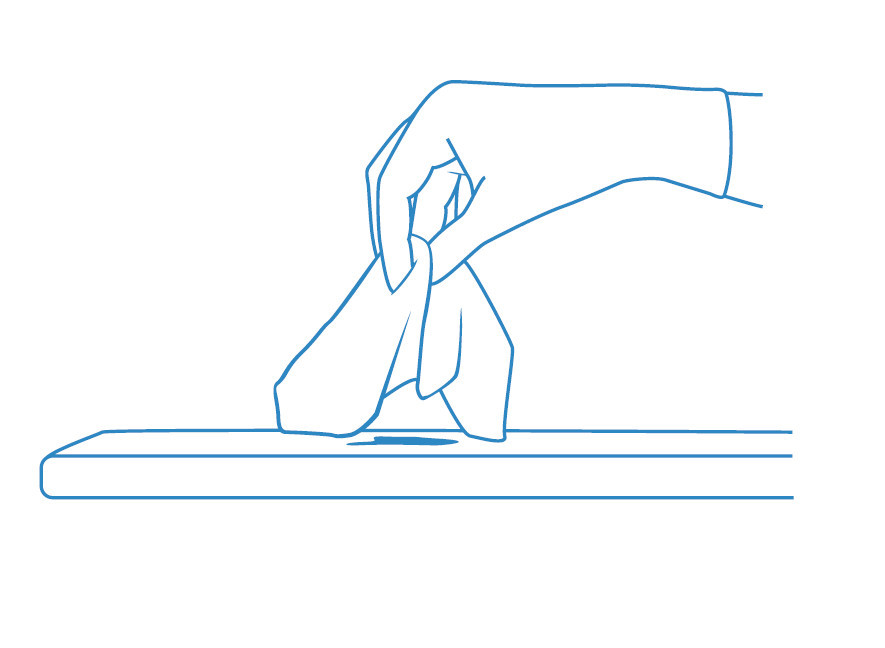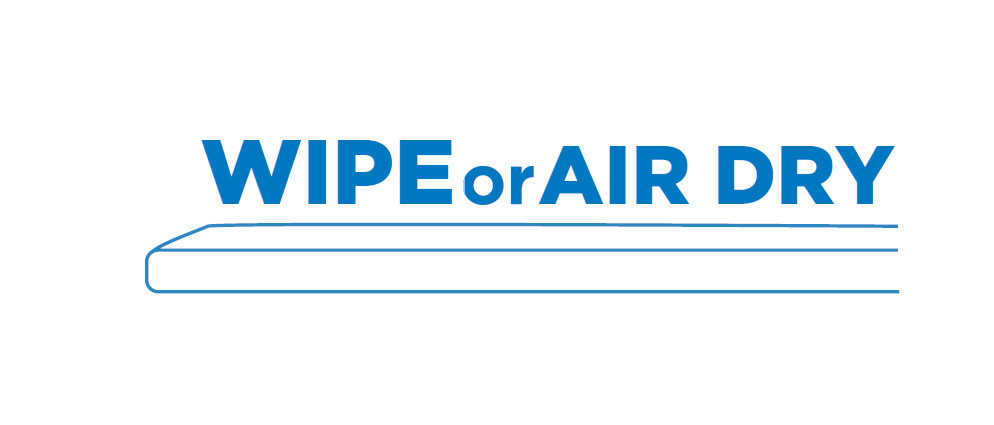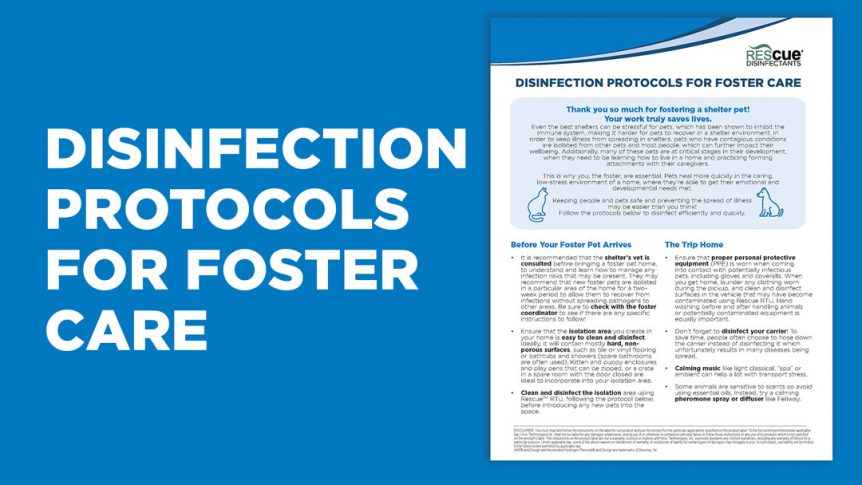Thank you so much for fostering a shelter pet!
Your work truly saves lives.
Even the best shelters can be stressful for pets, which has been shown to inhibit the immune system, making it harder for pets to recover in a shelter environment. In order to keep illness from spreading in shelters, pets who have contagious conditions are isolated from other pets and most people, which can further impact their wellbeing. Additionally, many of these pets are at critical stages in their development, when they need to be learning how to live in a home and practicing forming attachments with their caregivers.
This is why you, the foster, are essential. Pets heal more quickly in the caring, low-stress environment of a home, where they’re able to get their emotional and developmental needs met.
Keeping people and pets safe and preventing the spread of illness may be easier than you think!
Follow the protocols below to disinfect efficiently and quickly.
Before Your Foster Pet Arrives
- It is recommended that the shelter’s vet is consulted before bringing a foster pet home, to understand and learn how to manage any infection risks that may be present. They may recommend that new foster pets are isolated in a particular area of the home for a two-week period to allow them to recover from infections without spreading pathogens to other areas. Be sure to check with the foster coordinator to see if there are any specific instructions to follow!
- Ensure that the isolation area you create in your home is easy to clean and disinfect. Ideally, it will contain mostly hard, non-porous surfaces, such as tile or vinyl flooring or bathtubs and showers (spare bathrooms are often used). Kitten and puppy enclosures and play pens that can be zipped, or a crate in a spare room with the door closed are ideal to incorporate into your isolation area.
- Clean and disinfect the isolation area using RescueTM RTU, following the protocol below, before introducing any new pets into the space.
The Trip Home
- Ensure that proper personal protective equipment (PPE) is worn when coming into contact with potentially infectious pets, including gloves and coveralls. When you get home, launder any clothing worn during the pickup, and clean and disinfect surfaces in the vehicle that may have become contaminated using Rescue RTU. Hand washing before and after handling animals or potentially contaminated equipment is equally important.
- Don’t forget to disinfect your carrier! To save time, people often choose to hose down the carrier instead of disinfecting it which unfortunately results in many diseases being spread.
- Calming music like light classical, “spa” or ambient can help a lot with transport stress.
- Some animals are sensitive to scents so avoid using essential oils. Instead, try a calming pheromone spray or diffuser like Feliway.
Settling In
- Assign dedicated equipment and supplies that will only be used for the new pet, and keep the door closed when possible, to minimize potential airborne spread of pathogens. Limit the movement of pets, people and supplies into and out of the isolation area as much as possible.
- Make a list of potential surfaces that could harbor pathogens and transmit infection. This will include all surfaces that the pet will touch, both inside the isolation area and when moving outside or to other areas of the home as needed. Clean and disinfect these surfaces at least once daily, or more often if visibly soiled, for as long as infectious disease is present or suspected.
- Once all pets in the home are confirmed to be healthy, and are no longer in isolation, continue cleaning and disinfecting pet contact surfaces on a weekly basis, at minimum. Important surfaces to disinfect include:
- Pet beds
- Blankets
- Furniture
- Floor
- Pet crates and enclosures (including zippers)
- Food contact surfaces
- Toys
- Doorknobs
How to Disinfect with Rescue RTU
Rescue RTU is effective against even the toughest pathogens that foster pets may carry, including Canine parvovirus, Ringworm and Feline panleukopenia. Unlike bleach, Rescue kills pathogens while remaining gentle on pets and people – Rescue RTU is non-irritating to eyes, non-corrosive to skin and doesn’t have a harsh chemical odor. Rescue RTU can be used to clean and disinfect foster pet environments with the following protocol:

Step 1: Pre-clean heavily soiled areas
Remove visible soils, including litter, food any other debris, and pre-clean the area by working from the least contaminated area to the most contaminated area.

Step 2: Squirt, foam or wipe Rescue Ready-to-Use onto the surface
Spray the product 6-8 inches away from the surface, making sure the area is visibly wet. Wettability and surface coverage are equally important to ensure disinfection can be achieved in one application.

Step 3: Allow surface to remain visibly wet for 1 minute
In order for disinfectants to be effective, they must remain wet on the surface for their entire contact time. Rescue RTU kills viruses, bacteria and fungi in one minute.

Step 4: Wipe surface dry or allow to air dry
Use a damp, clean cloth to dry small areas, or allow to air dry. Food contact surfaces such as food bowls or water dishes should be rinsed with potable water following disinfection.

